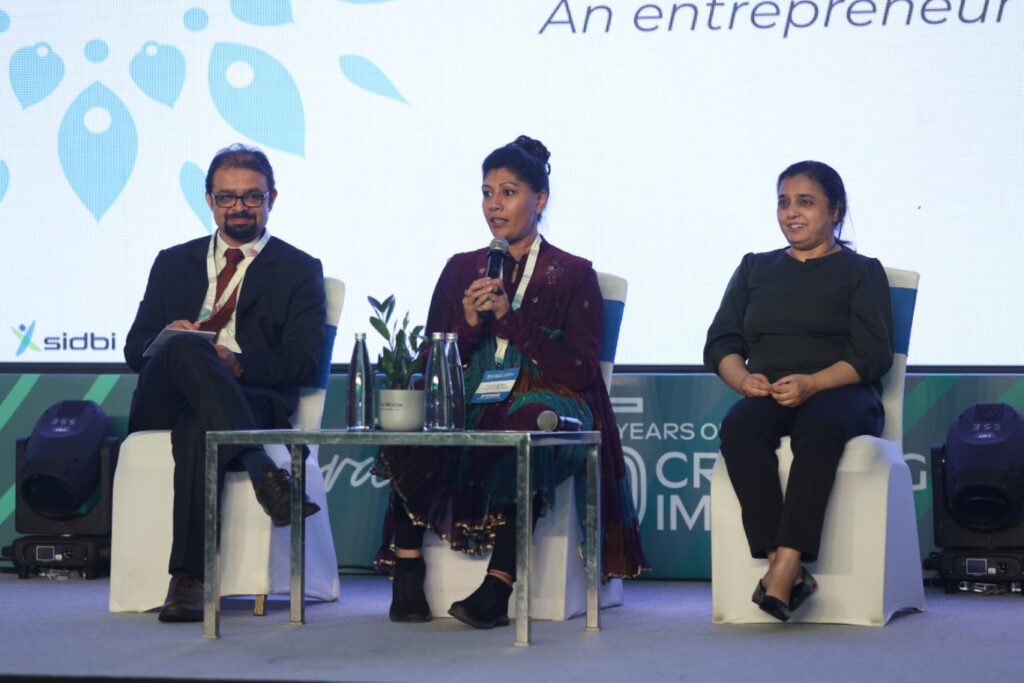Merging Climate and Gender Investments for a Sustainable and Inclusive Future

in 2023, only 26.5% of the global climate and clean-tech deals had at least one female founder. In India, of the climate-tech startups that raised Series A funding and beyond, only 9% were women-founded. Even though women are increasingly creating disruptive technologies to ensure a greener future for the planet, female founders raise less per deal than their male counterparts. On the investor end as well, women continue to remain underrepresented. In an attempt to address this gap, the 15th Sankalp Global Summit 2023 partnered with the Greening of Finance by Women (GroW), an initiative by the French Development Agency (AFD), Shakti Sustainable Energy Foundation (SSEF) and Small Industries Development Bank of India (SIDBI). We hosted a Masterclass that demonstrated the value of and different approaches to applying a gender lens to climate investments.
Gender Lens Investing (GLI) across the Climate Investment Lifecycle
A comprehensive framework on GLI as an investment strategy was presented by Amar Gokhale, Partner for Gender & Livelihoods at Intellecap. This entailed the entire investment spectrum:
- Sourcing: fund managers need to understand the sourcing experience from the female entrepreneur’s point of view and identify opportunities for improvement in their sourcing practices. This would include bridging six key gap areas:
- The knowledge gap: Are we building the capabilities of female entrepreneurs in our pipeline?
- The confidence gap: Are we boosting their confidence?
- The fit gap: Are we offering the right capital products and support services?
- The bias gap: Are we adequately mitigating the risk of bias?
- The message gap: Are we using the right message?
- The access gap: Are we using the right channels?
- Sourcing: fund managers need to understand the sourcing experience from the female entrepreneur’s point of view and identify opportunities for improvement in their sourcing practices. This would include bridging six key gap areas:
- Due diligence: fund managers need to identify risk factors in their current Due Diligence (DD) practices and uncover the drivers behind these risks. This would comprise introspection on:
- Who evaluates? Consider roles and backgrounds of those involved in the DD process.
- What is evaluated? Review how gender considerations are integrated and valued among the criteria, screens, and rubrics used in DD processes.
- How is it evaluated? Review how your DD processes are designed, deployed, and monitored to delivermon desired gender outcomes.
- Data: fund managers must identify opportunities to generate value from gender data for their fund, beyond just reporting on ESG performance. This can be leveraged through by improving six key areas:
- Positioning: Differentiate and strengthen reputation among entrepreneurs and peers
- Product: Improve value proposition, financial and TA offering to entrepreneurs
- Processes: Improve decision-making and investment processes from sourcing to exits
- People: Enhance team diversity, motivation and performance
- Planning: Inform and improve future investment decisions, fund strategy and fundraising
- Performance: Demonstrate and communicate fund ESG and financial performance
GLI for Climate – An Investor Perspective
The overarching framework was followed by Simmi Sareen, Director at Unitus Capital and Co-Founder of Climake, putting forth a pertinent climate financier perspective. “Ideally, more climate financing is all that would be needed. However, the reality is that women will not be equal beneficiaries of this financing. We need more intentional efforts.” Sareen stated. She highlighted that for Gender Lens Investing, it all boils down to two key aspects:
- How do you increase conscious investors and investments in gender?
- How do you grow more women-led or women-focused businesses?
To achieve this, there two possible avenues:
- When Limited Partners (LPs) are undertaking climate investment, they need to make gender lens of critical importance for fund managers and funds. For instance, most Development Finance Institutions (DFIs) have made gender integration into climate portfolio mandatory; however, we need to move beyond DFIs and have private LPs also do the same
- More strategic initiatives, such as the 2X Challenge, need to be created and effectively implemented
GLI for Climate – An Entrepreneur Perspective
From the critical supply-side perspective, we moved to the equally important demand-side with Ajaita Shah, Founder of Frontier Markets. Shah highlighted that currently, there is some consensus on the “What?” and the “Why?” of GLI, but the crucial action area is understanding the “How?”. Climate businesses need to learn operationalization of GLI. More often than not, businesses do not know how to have a gender lens and neither do their respective promoters. Herein, the key aspect is on building platforms that help with seeing, understanding, and reaching women. Further, in order to design product market fit solutions for economies of scale, and unlock private sector capital, there is a need to bring together different stages of capital, from grants to support designing with women and solution providers and drive a learning agenda, to ensure scale potential with low-cost debt for proving scalability, to then invite markets when revenues and margins require private capital. There is a big opportunity to make real returns, build impact, and design well if this comes together.
GLI for Climate – The Ecosystem Perspective
Following the key insights and recommendations, the session was divided into breakouts to hear from the diverse audience over their experiences, learnings and action points on effective integration of gender into climate investments. We had a spectrum of stakeholders – entrepreneurs, investors, donors, entrepreneur support institutions, and research agencies. The key takeaways were:
- Women need to increasingly be made a part of the solution design and decision making from both, increasing their representation and voice as investors and and as users of capital
- Mandates and incentives from investors of investors would be paramount in implementation of GLI into climate investments
- Critical to think through the intersectionality and not focus on climate or gender or everything in between as siloed sectors as the interplay would be key to creating successful outcomes
- Collection of sex-disaggregated data, particularly by leveraging technology to capture micro-level insights would be critical for effective gender integration
- Even though a lot has been said and done on GLI, the understanding is still incomplete, especially on its integration within climate portfolios; capacity building and customizable frameworks are needed at the nexus
The diversity of perspectives from a passionate set of speakers and audience helped us understand the eminent value of integrating gender and climate finance. We aim to continue these conversations and collaborate over key action areas for a future where climate innovation knows no gender boundaries.





